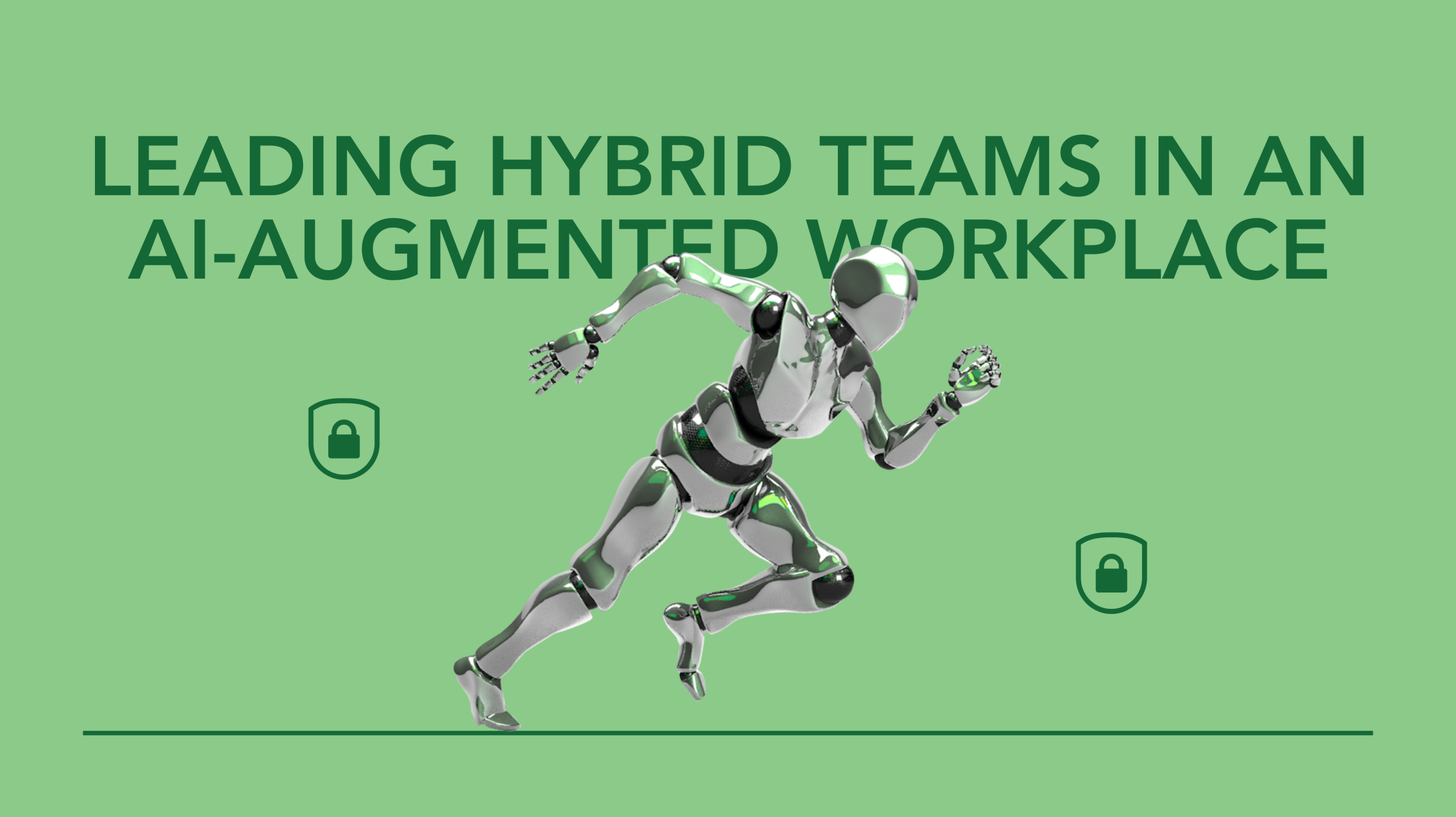Leading Hybrid Teams in an AI-Augmented Workplace
Hybrid work—blending remote and in-office collaboration—is now a mainstay, and artificial intelligence (AI) is transforming how teams operate. Leading hybrid teams in an AI-augmented workplace requires balancing technology’s power with human connection to drive productivity, engagement, and innovation. From startups to giants like Google and Salesforce, leaders are using AI to streamline tasks and enhance decision-making while fostering inclusive, motivated teams. This 1200-word blog post explores how to lead hybrid teams effectively, with practical strategies to harness AI ethically and maintain a people-first culture.
Why Hybrid Teams and AI Are the Future
Hybrid work offers flexibility, but it demands strong leadership to bridge physical and digital divides. AI augments this by automating routine tasks, analyzing data, and personalizing team interactions. For example, AI tools like Slack’s analytics predict project bottlenecks, helping leaders allocate resources. Meanwhile, 70% of companies plan to increase AI use by 2026, per Gartner, making it a core workplace driver. Leading hybrid teams in this context means leveraging AI to boost efficiency while ensuring fairness, transparency, and collaboration across dispersed workforces.
Let’s break down how to excel as a leader in this evolving landscape.
Using AI to Streamline Hybrid Team Operations
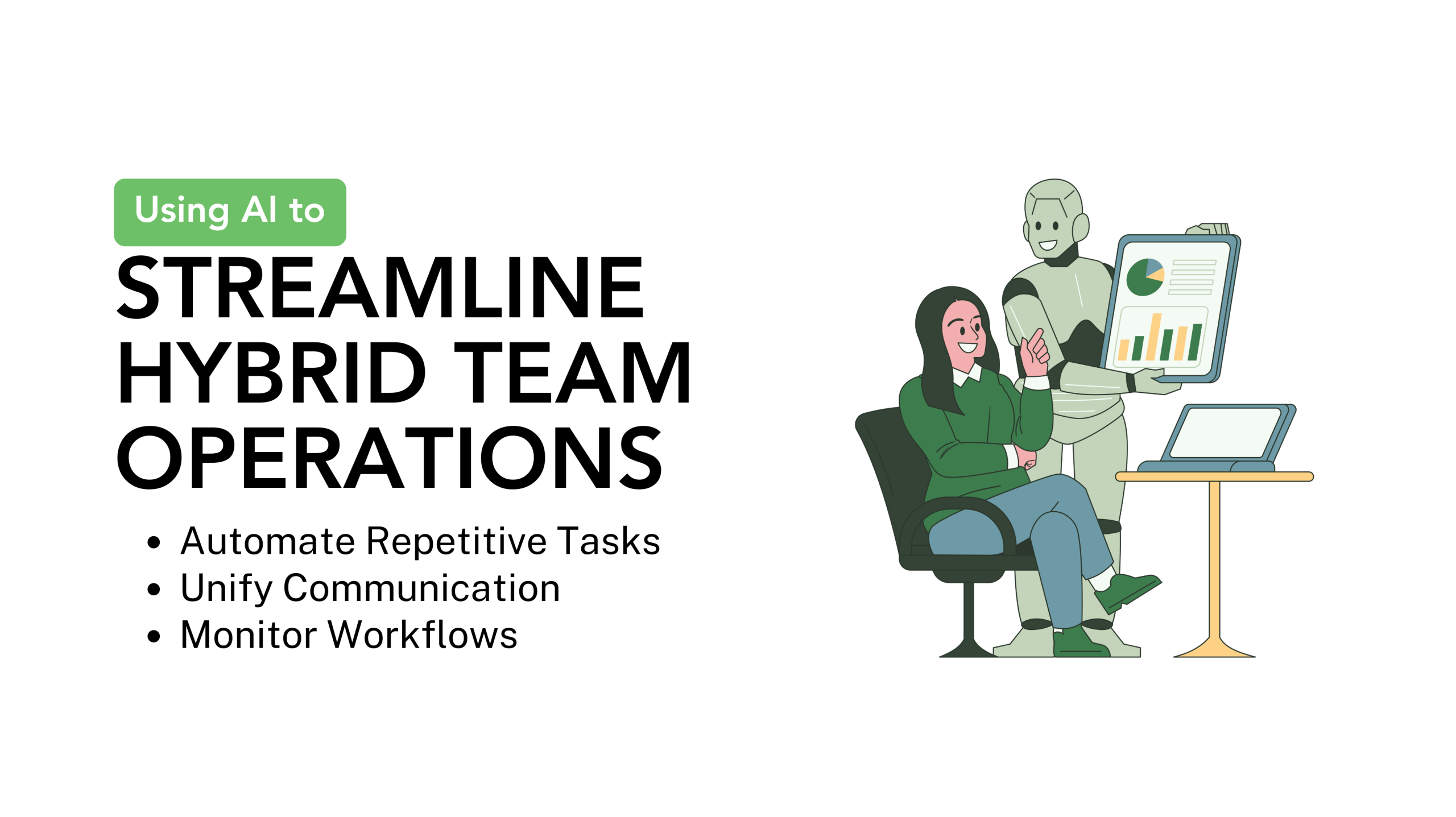
Collaboration can falter in hybrid setups due to miscommunication or isolation. AI bridges gaps by analyzing team dynamics and suggesting improvements. For instance, Humu’s AI nudges leaders to check in with remote workers showing low engagement. Google uses AI to optimize virtual brainstorming, matching team members’ skills to project needs.
To foster collaboration:
- Personalize Engagement: Use AI to tailor communication styles, like concise updates for busy team members.
- Boost Inclusion: AI tools like MURAL’s facilitation features ensure remote voices are heard in hybrid meetings.
- Track Sentiment: Platforms like Culture Amp analyze feedback to gauge team morale across locations.
Enhancing Team Collaboration with AI
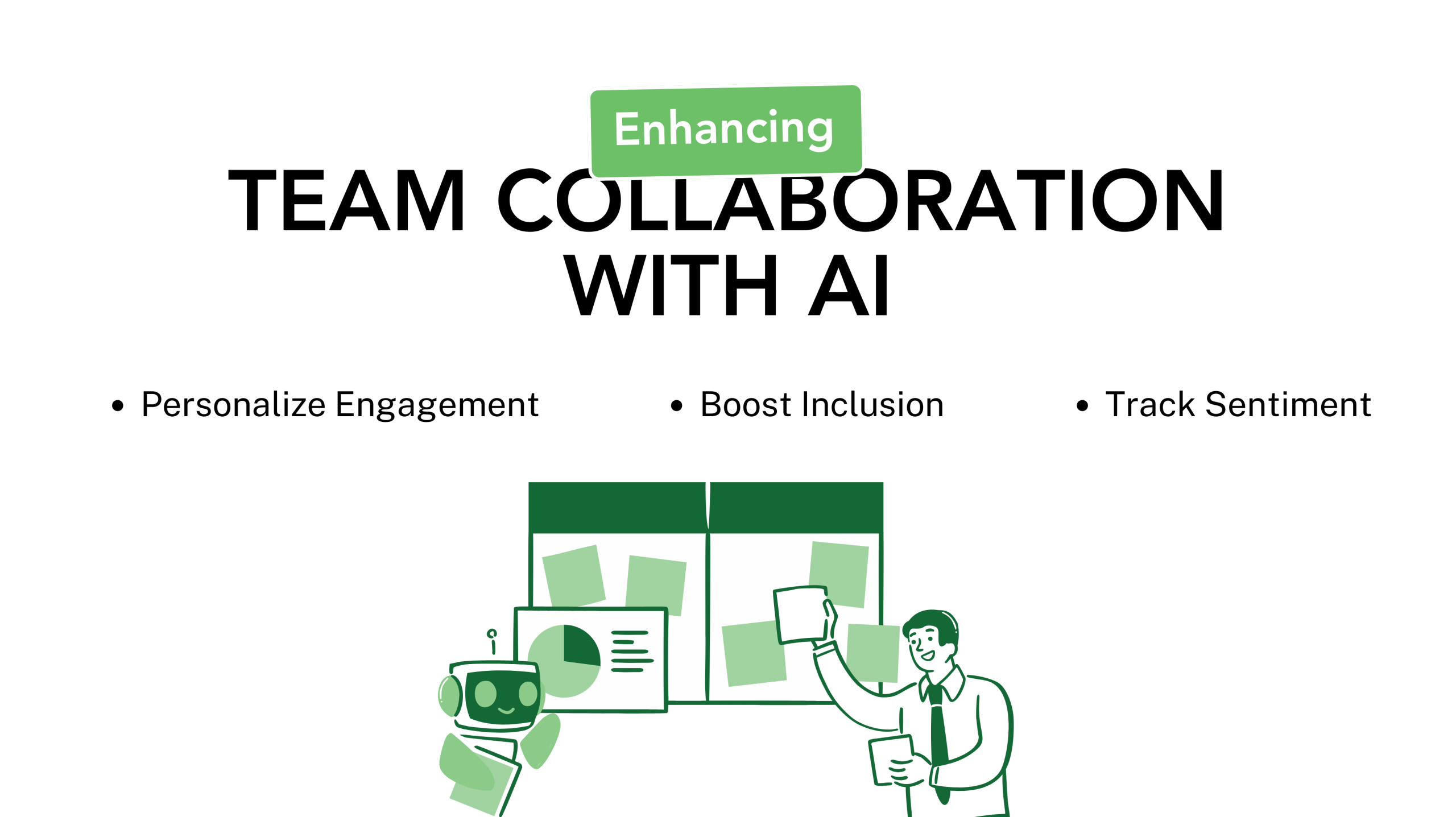
AI simplifies operational challenges in hybrid settings, from scheduling to task management. Tools like Asana’s AI prioritize tasks based on deadlines and team capacity, reducing manual oversight. Microsoft Teams uses AI to transcribe meetings and highlight action items, ensuring remote and in-office workers stay aligned.
To use AI effectively:
- Automate Repetitive Tasks: Assign AI to handle scheduling or progress tracking, freeing you to focus on strategy.
- Unify Communication: Use AI-driven platforms like Zoom’s smart summaries to share meeting insights across time zones.
- Monitor Workflows: Tools like Monday.com’s AI analytics flag delays, helping you reassign tasks proactively.
Supporting Employee Growth with AI
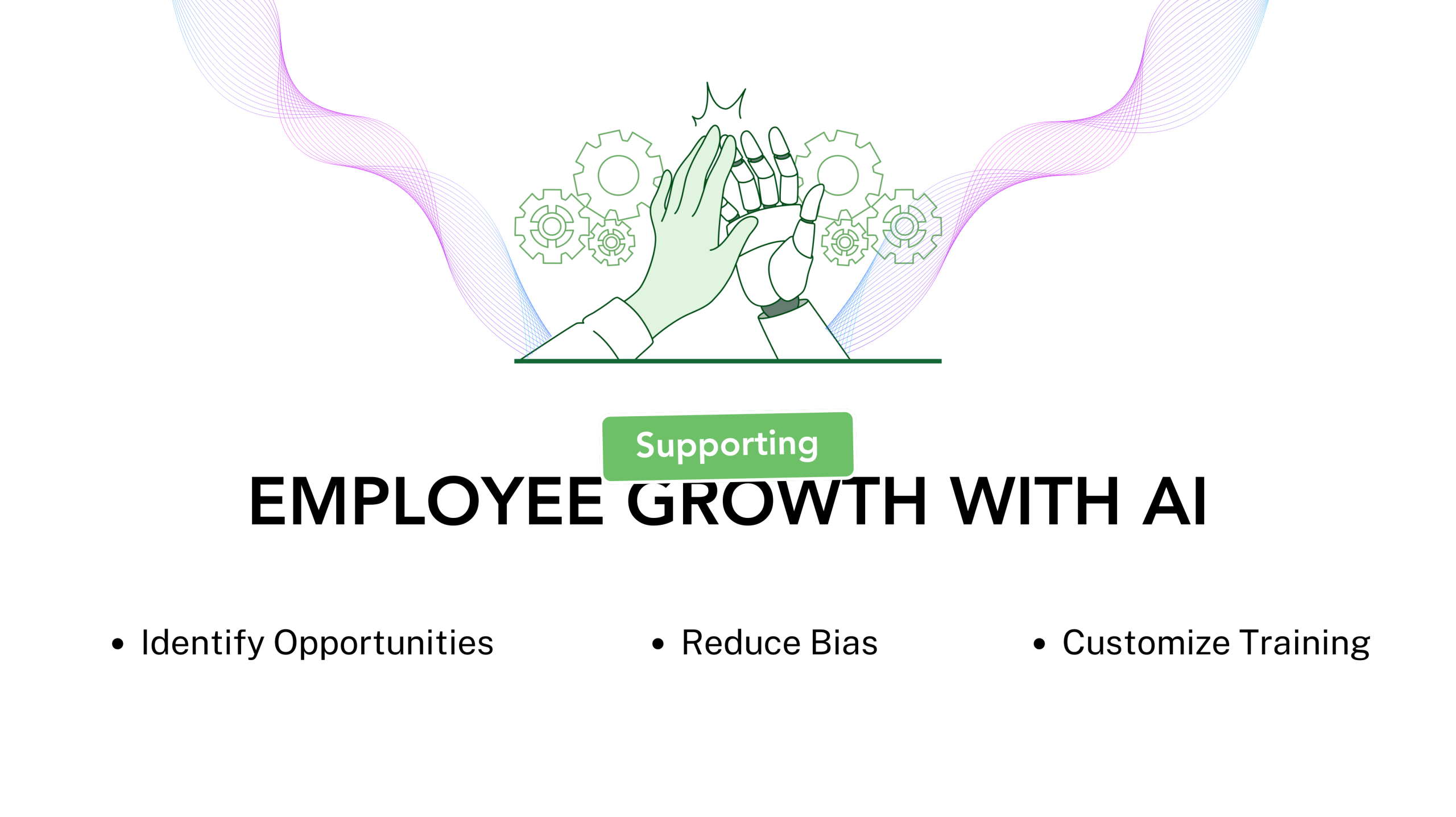
AI enhances leadership decisions by providing real-time insights. Tools like Tableau visualize hybrid team performance, showing who’s overloaded or underutilized. IBM Watson forecasts project outcomes, helping leaders allocate budgets or adjust timelines. Walmart uses AI to optimize hybrid staffing during peak seasons, balancing in-office and remote shifts.
To make ethical decisions:
- Validate Data: Ensure AI uses diverse, accurate datasets to avoid skewed insights.
- Explain Choices: Share how AI informed decisions, like resource allocation, to build transparency.
- Balance Intuition: Combine AI’s precision with your judgment, especially for cultural or ethical calls.
Making Data-Driven Decisions with AI
AI empowers leaders to nurture talent in hybrid teams by identifying skill gaps and recommending development paths. Platforms like Gloat analyze performance data to suggest training or mentorship, as Salesforce does to upskill its workforce. AI also personalizes learning, offering remote workers tailored courses via tools like Degreed.
To support growth:
- Identify Opportunities: Use AI to pinpoint high-potential employees for stretch projects.
- Customize Training: Leverage AI platforms to deliver role-specific learning, like coding for developers.
Reduce Bias: Audit AI recommendations to ensure fair promotion or training opportunities.
Overcoming Challenges in AI-Augmented Leadership
Leading hybrid teams with AI isn’t without hurdles. Over-reliance on AI can erode human connection, as seen in firms where automated feedback replaced personal check-ins, lowering morale. The “black box” issue—where AI’s logic is unclear—can also undermine trust, especially in performance evaluations.
To navigate challenges:
- Maintain Human Touch: Prioritize regular video calls or in-person meetups to complement AI tools.
- Demand Explainability: Choose AI platforms like Explainable AI by Google Cloud that clarify decision logic.
- Audit Regularly: Review AI outputs quarterly to catch biases or errors, like unfair task assignments.
Building an Inclusive AI-Augmented Culture
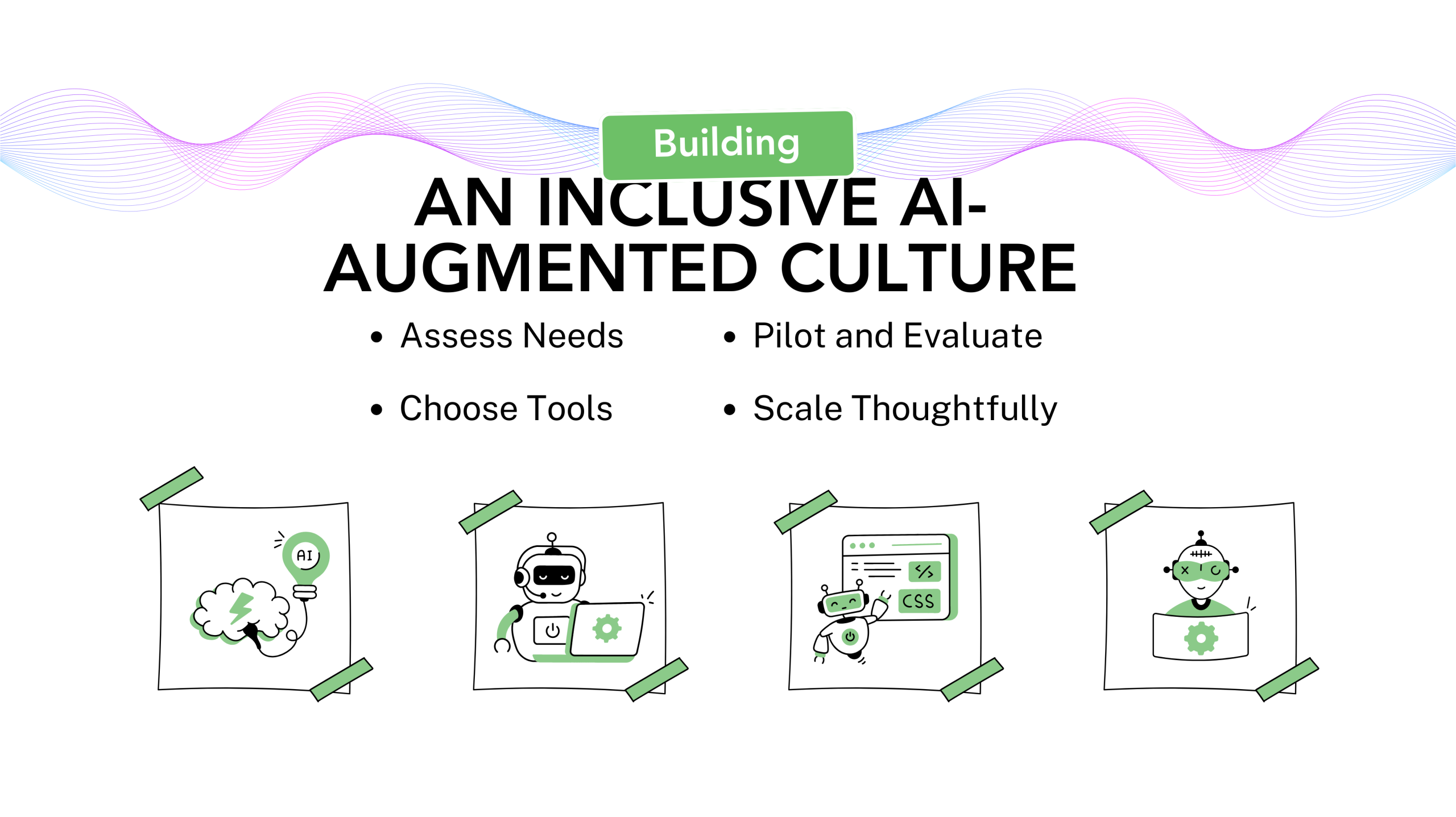
A thriving hybrid team culture blends AI’s efficiency with human values. Train your team to use AI tools confidently, addressing fears of job displacement. Engage remote and in-office workers in shaping AI policies, ensuring diverse perspectives. Document AI processes for transparency, especially in regulated sectors.
Getting Started: Your Roadmap to Lead with AI
Ready to lead hybrid teams in an AI-augmented workplace? Follow these steps:
- Assess Needs: Identify one hybrid team challenge, like collaboration or scheduling, where AI can help.
- Choose Tools: Start with user-friendly platforms like Asana or Humu for task or engagement management.
- Pilot and Evaluate: Test AI on a small scale, monitoring fairness and team feedback.
- Scale Thoughtfully: Expand AI use, ensuring regular audits and human oversight.
Lead Hybrid Teams with Confidence
Leading hybrid teams in an AI-augmented workplace is about blending technology’s precision with human empathy. By using AI to streamline operations, enhance collaboration, and support growth, you can build productive, inclusive teams. Stay ethical—prioritize transparency, fairness, and regular audits—to earn trust and drive results.
Want to dive deeper? Explore our FAQ on Ethical AI in Leadership for answers to common questions. Ready to transform your hybrid team? Contact us to discover AI tools and strategies tailored to your business.
How are you using AI with your hybrid team? Share your insights in the comments or reach out for personalized advice!

